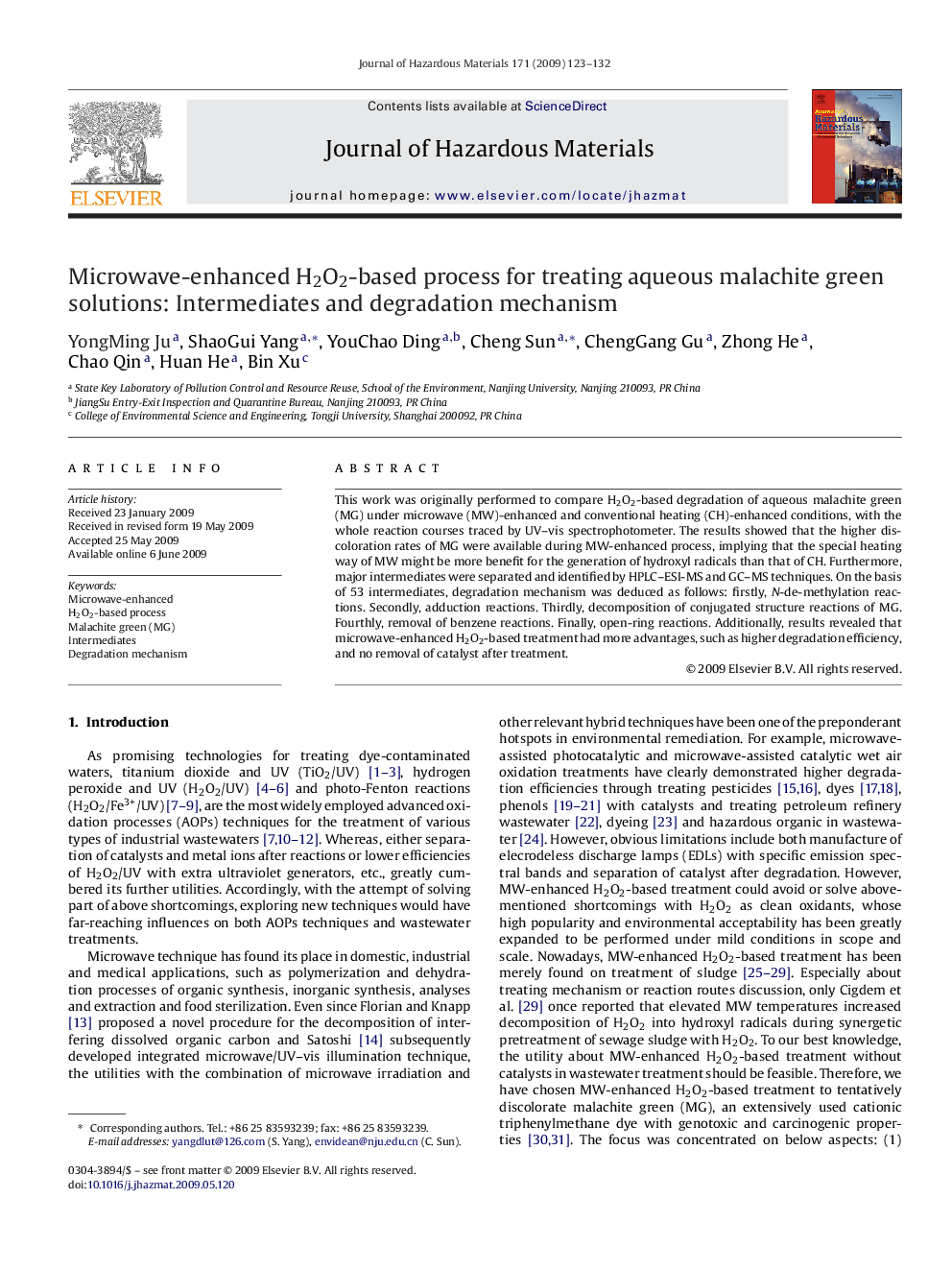| Article ID | Journal | Published Year | Pages | File Type |
|---|---|---|---|---|
| 581112 | Journal of Hazardous Materials | 2009 | 10 Pages |
Abstract
This work was originally performed to compare H2O2-based degradation of aqueous malachite green (MG) under microwave (MW)-enhanced and conventional heating (CH)-enhanced conditions, with the whole reaction courses traced by UV-vis spectrophotometer. The results showed that the higher discoloration rates of MG were available during MW-enhanced process, implying that the special heating way of MW might be more benefit for the generation of hydroxyl radicals than that of CH. Furthermore, major intermediates were separated and identified by HPLC-ESI-MS and GC-MS techniques. On the basis of 53 intermediates, degradation mechanism was deduced as follows: firstly, N-de-methylation reactions. Secondly, adduction reactions. Thirdly, decomposition of conjugated structure reactions of MG. Fourthly, removal of benzene reactions. Finally, open-ring reactions. Additionally, results revealed that microwave-enhanced H2O2-based treatment had more advantages, such as higher degradation efficiency, and no removal of catalyst after treatment.
Related Topics
Physical Sciences and Engineering
Chemical Engineering
Chemical Health and Safety
Authors
YongMing Ju, ShaoGui Yang, YouChao Ding, Cheng Sun, ChengGang Gu, Zhong He, Chao Qin, Huan He, Bin Xu,
